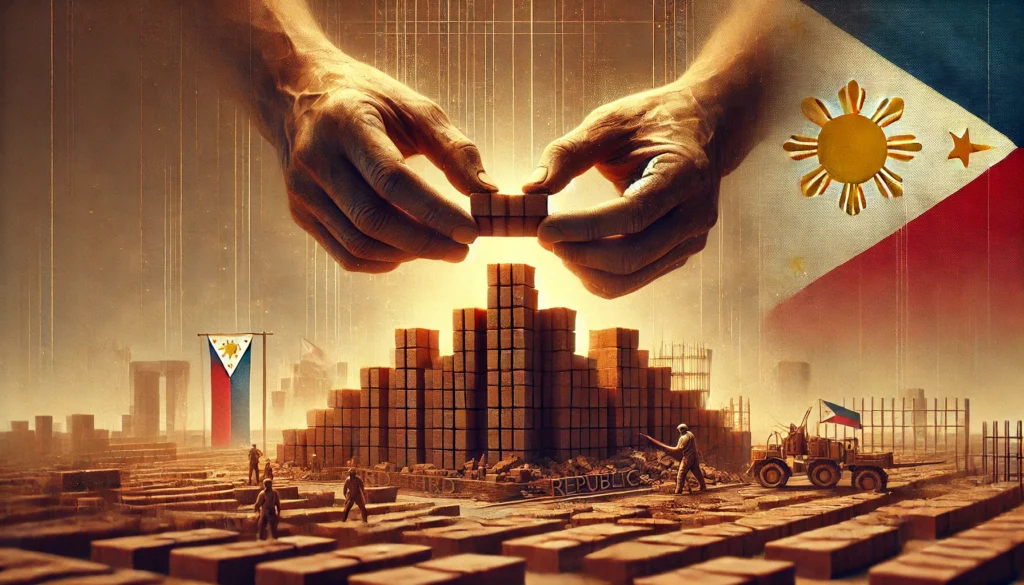The Philippine Revolution, a pivotal moment in the country’s history, marked the Filipino people’s struggle against Spanish colonial rule. This significant uprising, which began in 1896, was the culmination of centuries of oppression and discontent under Spanish governance. The revolution was not a sudden outburst but rather the result of a gradual build-up of nationalist sentiments and a growing desire for independence among Filipinos.
Factors Leading to the Revolution
Several key factors contributed to the outbreak of the Philippine Revolution:
- Spanish colonial policies
- Economic exploitation
- Religious oppression
- Social inequality
- Rise of Filipino nationalism
The Spanish colonial administration had implemented policies that favored Spanish interests over those of the native Filipinos. This systemic discrimination permeated various aspects of society, including governance, economy, and social structures.
The Propaganda Movement
Precursor to Revolution
The Propaganda Movement, which emerged in the 1880s, played a crucial role in laying the groundwork for the revolution. This movement, led by educated Filipinos known as the Ilustrados, sought reforms within the Spanish colonial system rather than outright independence.
Key figures of the Propaganda Movement included:
- José Rizal
- Marcelo H. del Pilar
- Graciano López Jaena
These individuals used their writings and publications to raise awareness about the plight of Filipinos under Spanish rule. They advocated for equal rights, representation in the Spanish Cortes (parliament), and an end to abuses by Spanish officials and friars.
The Katipunan and the Outbreak of Revolution
Birth of a Revolutionary Society
The failure of the Propaganda Movement to achieve substantial reforms led to the formation of a more radical organization, the Katipunan. Founded on July 7, 1892, by Andrés Bonifacio and others, the Katipunan was a secret revolutionary society that aimed to gain independence through armed struggle.
Key Facts about the Katipunan:
| Aspect | Details |
|---|---|
| Full Name | Kataas-taasang, Kagalang-galangang Katipunan ng mga Anak ng Bayan |
| Meaning | Highest and Most Respected Association of the Sons of the Nation |
| Founding Date | July 7, 1892 |
| Founder | Andrés Bonifacio |
| Primary Objective | Philippine independence from Spain |
| Membership | Primarily from the lower and middle classes |
The Katipunan grew rapidly, attracting members from various sectors of society, particularly the lower and middle classes. Its secret nature and ritualistic practices appealed to many Filipinos who were disillusioned with the Spanish colonial government.
The Cry of Pugad Lawin
Igniting the Revolution
The Philippine Revolution officially began with the Cry of Pugad Lawin on August 23, 1896. During this event, members of the Katipunan, led by Andrés Bonifacio, tore up their cédulas (community tax certificates) as a symbolic act of defiance against Spanish authority. This action marked the beginning of open hostilities between the revolutionaries and the Spanish colonial forces.
The initial phase of the revolution was characterized by:
- Guerrilla warfare tactics
- Rapid spread of revolutionary activities across Luzon
- Spanish counteroffensives and reprisals
- Growing support for the revolution among the Filipino populace
Major Battles and Campaigns
The Philippine Revolution saw numerous battles and campaigns across the archipelago. Some of the most significant engagements include:
Battle of San Juan del Monte
- Date: August 30, 1896
- Location: San Juan del Monte, Manila
- Outcome: Spanish victory, but boosted revolutionary morale
Siege of Baler
- Date: July 1, 1898 – June 2, 1899
- Location: Baler, Aurora
- Outcome: Spanish surrender after 11 months of siege
Battle of Binakayan-Dalahican
- Date: November 9-11, 1896
- Location: Cavite
- Outcome: Filipino victory, considered one of the greatest wins of the revolution
These battles, among many others, demonstrated the determination and growing military capabilities of the Filipino revolutionaries. Despite facing a well-equipped Spanish army, the revolutionaries managed to secure several victories that bolstered their cause.
Key Figures of the Revolution
Leaders and Heroes
The Philippine Revolution produced numerous leaders and heroes who played crucial roles in the struggle for independence. Some of the most prominent figures include:
- Andrés Bonifacio: Founder of the Katipunan and considered the “Father of the Philippine Revolution”
- Emilio Aguinaldo: First President of the Philippine Republic and military leader
- Apolinario Mabini: Known as the “Brains of the Revolution” for his intellectual contributions
- Gregorio del Pilar: Young general famous for his heroic last stand at Tirad Pass
- Melchora Aquino: Known as “Tandang Sora,” she provided support to the Katipunan
These individuals, along with countless others, contributed their skills, resources, and often their lives to the cause of Philippine independence.
The Tejeros Convention and Internal Conflicts
Leadership Struggles
The Tejeros Convention, held on March 22, 1897, was a pivotal event that exposed internal divisions within the revolutionary movement. The convention was called to elect leaders for a new revolutionary government, but it resulted in a rift between supporters of Bonifacio and Aguinaldo.
Key outcomes of the Tejeros Convention:
- Emilio Aguinaldo was elected President
- Andrés Bonifacio was elected Director of Interior but his qualifications were questioned
- Bonifacio and his supporters left the convention, declaring its results null and void
This internal conflict weakened the revolutionary movement and led to the tragic execution of Andrés Bonifacio on May 10, 1897, under orders from Aguinaldo’s government.
The Pact of Biak-na-Bato and Exile
Temporary Truce
The Pact of Biak-na-Bato, signed on December 14, 1897, was an agreement between the Spanish colonial government and the Filipino revolutionaries led by Emilio Aguinaldo. This pact temporarily halted the revolution and resulted in:
- A ceasefire between Spanish forces and the revolutionaries
- Promised reforms by the Spanish government
- Voluntary exile of revolutionary leaders to Hong Kong
- Payment of indemnity to the revolutionaries
However, the pact proved to be short-lived as both sides failed to fully comply with its terms. The revolutionary leaders used their time in exile to plan for future actions and to establish international connections.
The Spanish-American War and Its Impact
A New Colonial Power
The outbreak of the Spanish-American War in 1898 dramatically altered the course of the Philippine Revolution. Key events during this period include:
- Return of Aguinaldo to the Philippines with American support
- Declaration of Philippine Independence on June 12, 1898
- Establishment of the First Philippine Republic
- American victory over Spain and the Treaty of Paris
The Treaty of Paris, signed on December 10, 1898, ended the Spanish-American War but also transferred control of the Philippines from Spain to the United States for $20 million. This development led to a sense of betrayal among Filipino revolutionaries who had expected support for their independence.
The Philippine-American War
Continuing the Struggle for Independence
The transfer of the Philippines to American control led to the Philippine-American War, which began on February 4, 1899. This conflict is often considered a continuation of the Philippine Revolution, as Filipinos continued to fight for their independence, now against a new colonial power.
Key aspects of the Philippine-American War:
- Duration: 1899-1902 (officially), with sporadic resistance continuing until 1913
- Filipino use of guerrilla warfare tactics
- Harsh American counterinsurgency measures
- Significant civilian casualties
- Capture of Emilio Aguinaldo in 1901
The war resulted in an American victory and the establishment of American colonial rule in the Philippines. However, the spirit of independence that drove the Philippine Revolution continued to influence Filipino nationalism throughout the American colonial period.
Legacy of the Philippine Revolution
Enduring Impact
The Philippine Revolution, despite its complex outcomes, left a lasting legacy on Philippine society and national identity. Its impact can be seen in various aspects:
- Nationalism: The revolution fostered a strong sense of Filipino national identity that persists to this day.
- Political consciousness: It raised political awareness among Filipinos and laid the groundwork for future democratic institutions.
- Cultural renaissance: The revolution sparked a renewed interest in Filipino culture, language, and heritage.
- Historical narrative: The events and heroes of the revolution became central to Philippine historical narratives and national mythology.
- International relations: The revolution and subsequent events shaped the Philippines’ relationships with Spain, the United States, and other nations.
Historiography and Modern Interpretations
Evolving Perspectives
The study and interpretation of the Philippine Revolution have evolved over time. Modern historians have brought new perspectives to the understanding of this crucial period in Philippine history:
- Revisionist approaches: Some historians have challenged traditional narratives, offering new interpretations of key events and figures.
- Social history focus: There’s increased attention to the roles of ordinary Filipinos, women, and marginalized groups in the revolution.
- Regional variations: Recent studies have highlighted the diverse experiences of the revolution across different regions of the Philippines.
- Transnational context: The revolution is increasingly examined within the broader context of global anti-colonial movements and international relations.
These evolving interpretations continue to enrich our understanding of the Philippine Revolution and its significance in both Philippine and world history.
Commemoration and Remembrance
Honoring the Revolution
The Philippine Revolution is commemorated in various ways in modern Philippine society:
- National holidays: Independence Day (June 12) and Bonifacio Day (November 30) are celebrated annually.
- Monuments and museums: Numerous sites across the country honor revolutionary heroes and events.
- Educational curriculum: The revolution is a key topic in Philippine history education at all levels.
- Cultural productions: The revolution continues to inspire literature, art, and media productions.
These commemorations serve to keep the memory and values of the revolution alive in the national consciousness.
Conclusion: The Ongoing Relevance of the Philippine Revolution
The Philippine Revolution remains a pivotal moment in the nation’s history, shaping the country’s path to nationhood and influencing its development to this day. While the immediate goals of the revolution were not fully realized, its spirit of nationalism, desire for self-determination, and quest for social justice continue to resonate in contemporary Philippine society.
As the Philippines faces new challenges in the 21st century, the lessons and ideals of the revolution provide inspiration and guidance. The struggle for genuine independence, good governance, and social equity—themes central to the revolution—remain relevant in the ongoing process of nation-building.
Understanding the complexities of the Philippine Revolution is crucial not only for appreciating the country’s past but also for navigating its present and future. As such, it remains a vital subject of study, reflection, and debate for Filipinos and scholars of Philippine history worldwide.
Disclaimer: While every effort has been made to ensure the accuracy of the information presented in this blog post, historical interpretations can vary, and new research may emerge. Readers are encouraged to report any inaccuracies or provide additional insights so that the content can be reviewed and updated as necessary. The goal is to provide the most accurate and comprehensive information possible about this crucial period in Philippine history.




